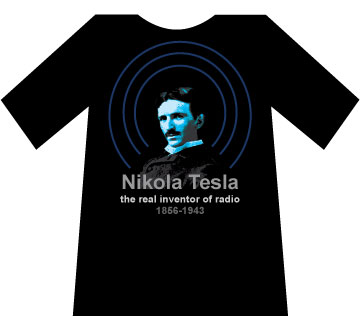|
Nikola Tesla (1856 - 1943) - Master of Resonance
It was an innocent experiment. Tesla had attached a small
vibrator to an iron column in his New York City laboratory and started it vibrating.
At certain
frequencies specific pieces of equipment in the room would jiggle. Change the frequency
and the jiggle would move to another part of the
room. Unfortunately, he hadn't accounted for the fact that the column ran
downward into the foundation beneath the building. His vibrations were being
transmitted all over Manhattan.
For Tesla, the first hint of trouble came when the walls and floor began to
heave (ref 1). He stopped the experiment just as the police
crashed through the door. It seems he'd started a small earthquake in his
neighborhood smashing windows, swayed buildings, and sending panicked neighbors
rushing into the streets. The police had frequently responded to complaints
about Tesla's unusual activities. |
|
|
Although Tesla was not the first to discover resonance he was obsessed with
it and created some of the most incredible demonstrations of it ever seen. He
studied both mechanical and electrical versions. In the process he created
an artificial earthquake, numerous artificial lightning storms, knocked an
entire power plant off line in Colorado, and nearly caused the steel frame of a
sky scraper under construction in Manhattan to collapse. Tesla realized that the
principles of resonance could be used to transmit and receive radio messages
well before Marconi. In fact, many knowledgeable sources now credit Tesla as
the inventor of radio rather than Marconi. This includes the Supreme Court
which in 1943 ruled that Tesla's radio patents had preceded all others including
Marconi's .
Tesla was a one-of-a-kind neurotic genius who had a profound influence on our
technology and culture. He was obsessed with germs and the number three yet his inventions almost single handedly enabled the
creation of our modern AC power distribution system. He was a contemporary of
Edison and for a time worked for the famous inventor. Unlike Edison (who
Tesla considered something of a bumpkin), Tesla used theory and calculations as
well as experimentation to conduct his research and was the more modern of the
two in his approach. He was also far more interested
in pursuing his inventions for their own sake than in becoming rich and famous.
Unfortunately, Tesla's obsession with pursuing grand ideas and projects
proved to be his undoing. He became convinced that energy could be transmitted
through the air without wires and spent a small fortune on a demonstration
project. He
built a giant Tesla coil in Colorado Springs which used electrical resonance to
build up incredibly high voltages and caused fantastic lightning shows.
Unfortunately, his dream of transmitting wireless power was never commercialized and, partly because of it, Tesla ended dying a
poor man .
|
|
The mad scientist stereotype came from Tesla. Tesla's Manhattan Lab was a mysterious place with buzzing electric arcs, eerie lighting, and bizarre contraptions. The lab undoubtedly inspired mad scientist scenes in 1930's horror pictures such as Frankenstein, with Boris Karloff, in which high voltage arcs are used to give the monster life. Although Tesla never attempted to create life he did create the first radio controlled robotic vehicles and claimed that one day robots would free humanity of drudgery work. He also claimed to have invented a powerful death beam.
For entertainment, Tesla once convinced his good friend Mark Twain to test out a vibrating platform in his Manhattan lab. Twain took him up on the offer and found it to his liking. When Tesla commanded Twain to come down off the platform Twain refused because he was having a good time. A few minutes later Twain ran from the device. It seems that Tesla had deliberately neglected to tell Twain that the vibration tended to cause diarrhea.
Had Tesla been less eccentric and more interested in personal fortune he would have avoided the grandiose projects which were his undoing. If he had simply avoided making outrageous statements, he would have had more scientific credibility and easily overshadowed Edison. Today, Tesla would be far more famous and the subject of resonance would probably receive far more attention in science textbooks. Resonance was certainly one
of Tesla's greatest passions and, like Tesla, seems almost too mysterious to be real.
|
|

-
Be sure to check out the t-shirt honoring Tesla's 150th
birthday
anniversary
-
available at
the
Intuitor Store
|
|
Although Tesla has not
received the acclaim he deserves, he has
nonetheless, become a cult hero. For
more information about Tesla
The Tesla Society
Prev |
Contents | Next
|